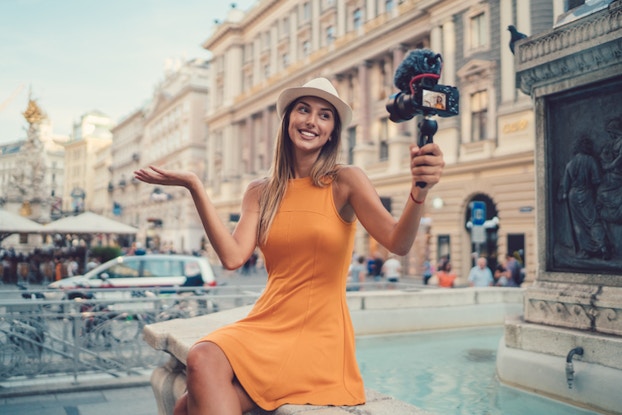
A lot has changed since influencer marketing became one of the most popular ways to reach customers in 2019. On one hand, there’s never been a more captive audience on social media. Facebook and Instagram have seen 40% increase in active users due to COVID-19, with views for Instagram Live and Facebook Live doubling in one week.
On the other hand, influencers have had to shift gears in the wake of a global pandemic and the ongoing social justice movement. Many paid promoters have faced backlash in recent weeks for paid posts that are perceived as tone-deaf or insensitive.
Successful influencer marketing is all about authenticity and transparency. How do you continue to execute great influencer campaigns during a period of turmoil? Here’s what you need to know about the landscape of influencer marketing in 2020.
[Read more: How to Leverage Influencer Marketing]
The state of influencer marketing in 2020
According to The State of Influencer Marketing Report, nearly 100% of brands plan to use Instagram for marketing this year, with 77% planning to work with micro-influencers, specifically. Influencer content is outperforming branded content on paid channels, with 89% of marketers planning to re-use influencer content across their social media, website, email and even display ads. In many respects, this puts influencers in the driver’s seat.
COVID-19 has shifted this outlook slightly. While online viewership has surged, content creation now comes with a new set of complexities and a significant shift in strategy. A pandemic pivot, if you will.
Some brands leaned on influencers more than ever to promote their non-essential products during the pandemic. Other companies shifted away entirely, as influencer content was curtailed by stay-at-home orders and other lifestyle changes. Traditional communication that focused on "me and brands I love" has shifted to "us" and "we."
Make the most of micro-influencers
The best influencers are able to engage with their audience authentically: They believe in the products and brands with which they work. Be selective about who you work with to boost your reputation and credibility.
A partnership with a micro-influencer comes with many positives for small business owners. Micro-influencers — defined as those with 1,000-10,000 followers — typically charge less, and are proven to be more effective. Micro-influencers attract more than four times the engagement than bigger personalities and tend to have loyal followers who trust their recommendations. They frequently interact online with their followers, building genuine relationships.
[Read more: How to Find an Influencer]
Meaningful collaborations and actual relationships between brands and influencers will become essential marketing tools in 2020.
Pursue authentic messaging
In 2020, authenticity is a make-or-break quality for brands and influencers alike. As a small business owner seeking a connection with consumers, you can’t ignore the rapid social change our country is experiencing. Acknowledge how dramatically our world has changed in the past few months before you pursue your influencer marketing strategies
Do the internal work to strategize how your brand will adapt your communications, address relatable topics and incorporate a level of social awareness. Check your social responsibility as a company. Craft campaigns that aren't tone-deaf. Consumers want to know what you're doing to provide relief to those in need.
Find your voice before trying to work through a secondary spokesperson on social media. It's going to be a challenge to find the sweet spot of engaging content, successful sales and genuine transparency. The more you can do to improve your marketing strategy, the more effective your influencer campaigns will be.
[Read more: 9 Experts on How to Communicate With Customers During Coronavirus]
Create long-term partnerships
Given the current state of the world, one-off influencer campaigns are likely to decrease in favor of long-term partnerships. The "rule of seven" still applies to sales: this rule states that it takes seven ads to inspire a customer to take action. Multiple posts over an extended period will improve not only authenticity and consumer trust but also your conversion rate. Meaningful collaborations and actual relationships between brands and influencers will become essential marketing tools in 2020.
Don’t ignore TikTok
While some believe it's a fad, TikTok is the next frontier in social media — not just for influencers, but for brands and marketers too. In 2019, TikTok was the most downloaded app on the Apple App Store, ranked above YouTube, Instagram, Facebook and Snapchat. The app's engagement rate is second to none, sitting at 9.38% for profiles with less than 1,000 followers and 8.57% with less than 5,000 followers.
If you’re not sure where to start with TikTok, working with an influencer is a great way to get your feet wet. Through your partnership, you can start studying what type of content works and how to interact with others on the platform naturally. Brands seeking that elusive Gen Z following can help you gain customers from the platform, as well as learn the style of communication that will resonate with this generation of shoppers. Effectively utilize micro-influencers on TikTok and you might find the ultimate formula for successful influencer marketing in 2020.
CO— aims to bring you inspiration from leading respected experts. However, before making any business decision, you should consult a professional who can advise you based on your individual situation.
Want to read more? Be sure to follow us on LinkedIn!
CO—is committed to helping you start, run and grow your small business. Learn more about the benefits of small business membership in the U.S. Chamber of Commerce, here.









